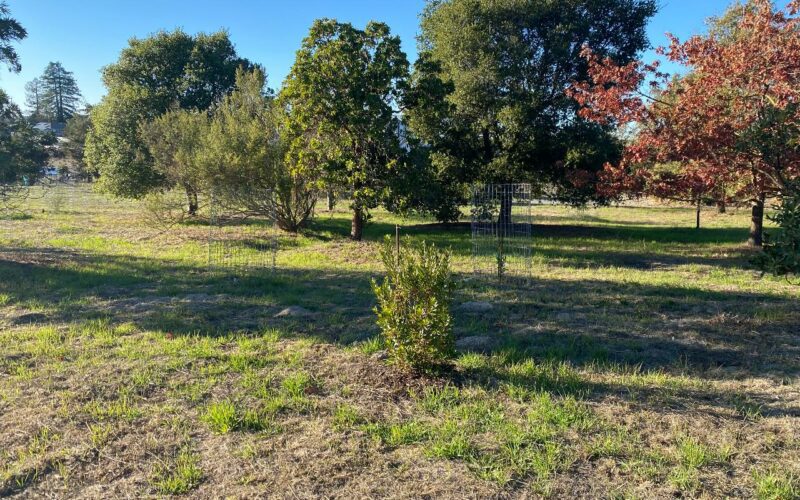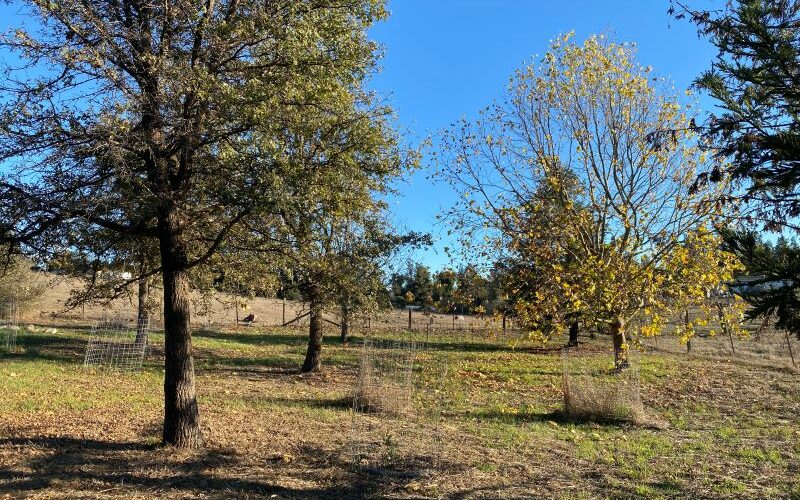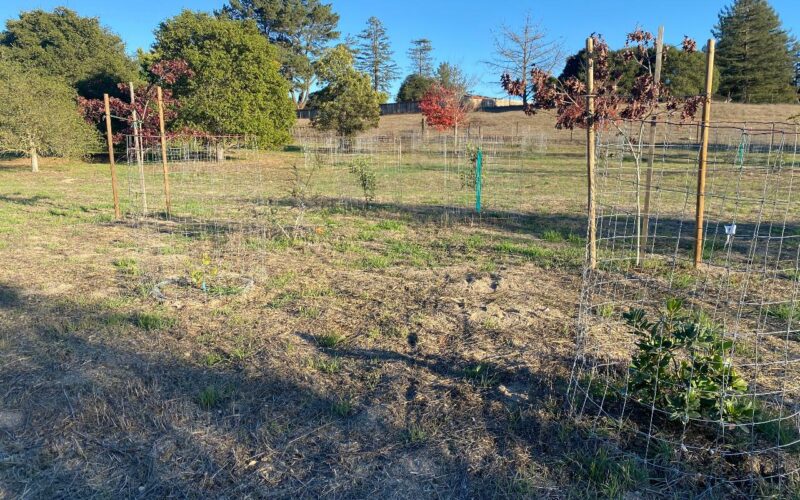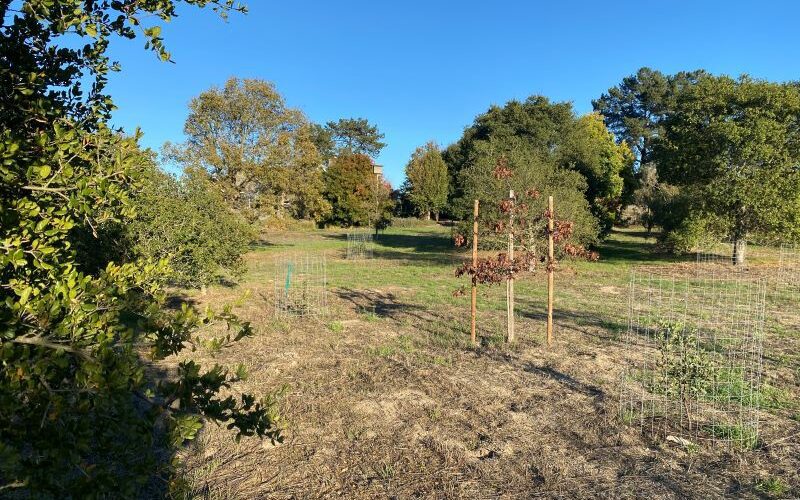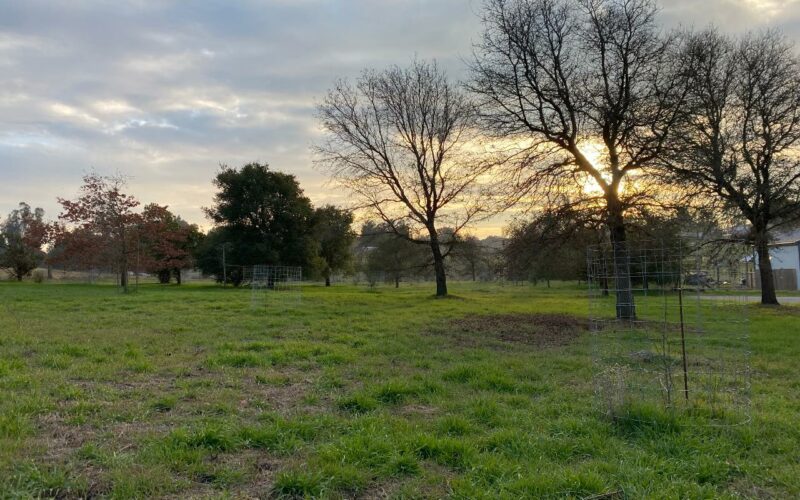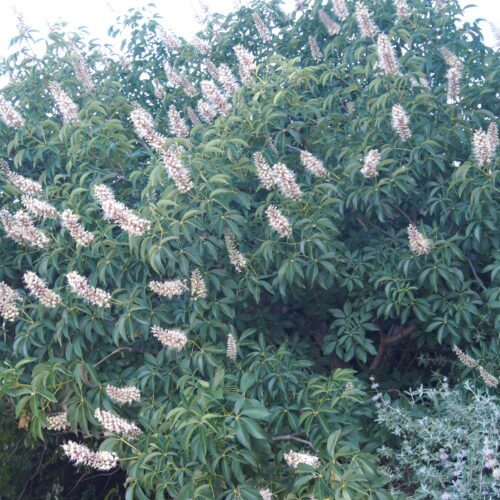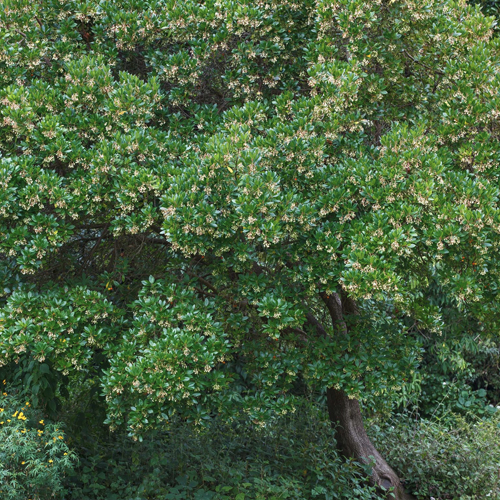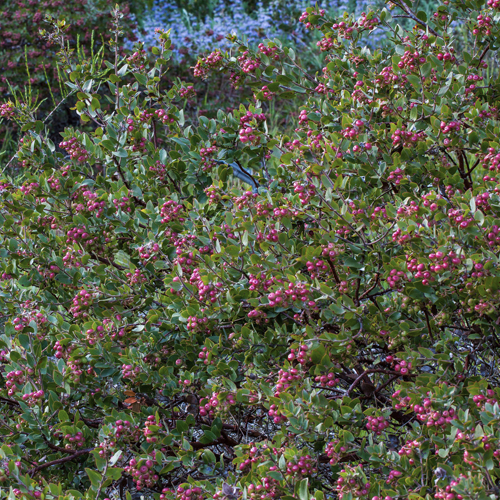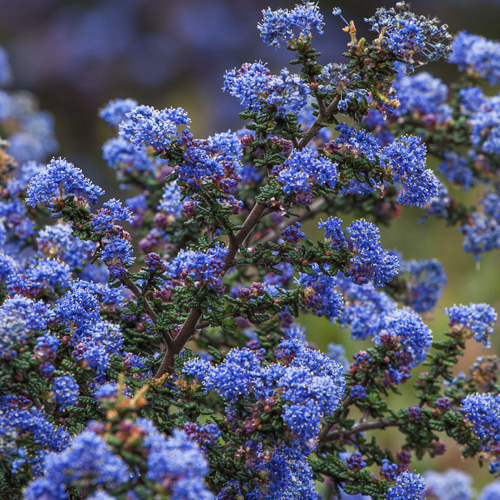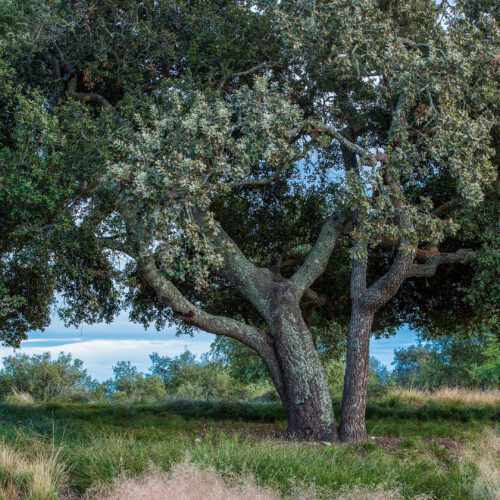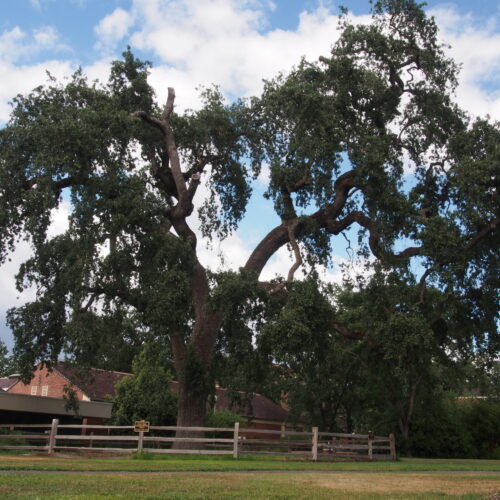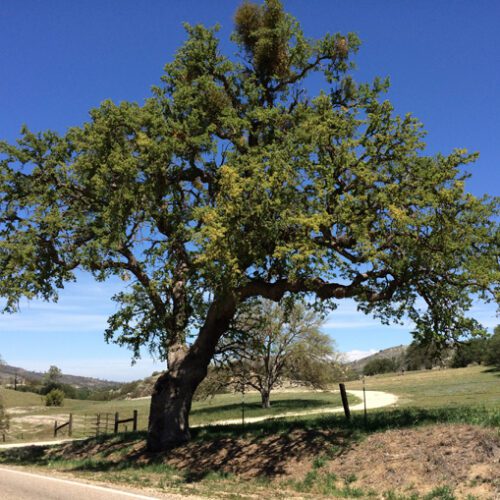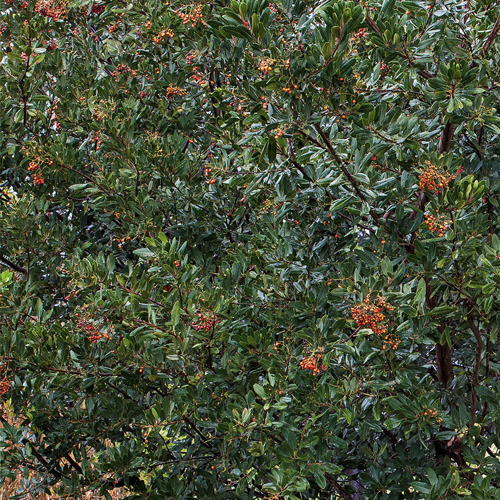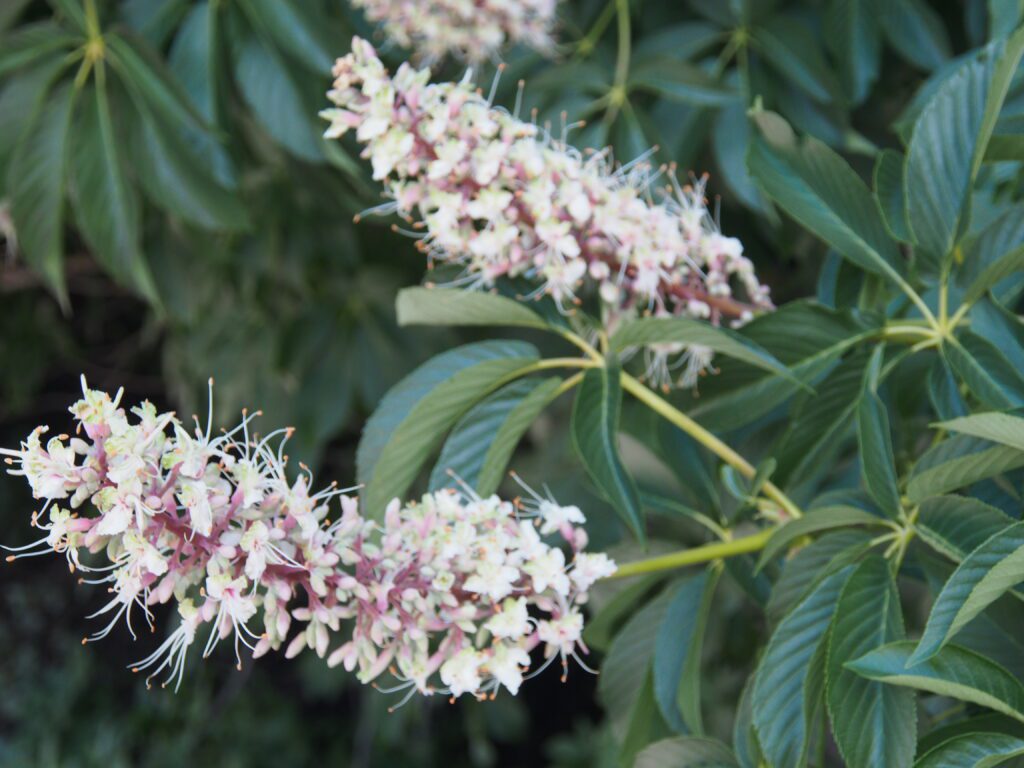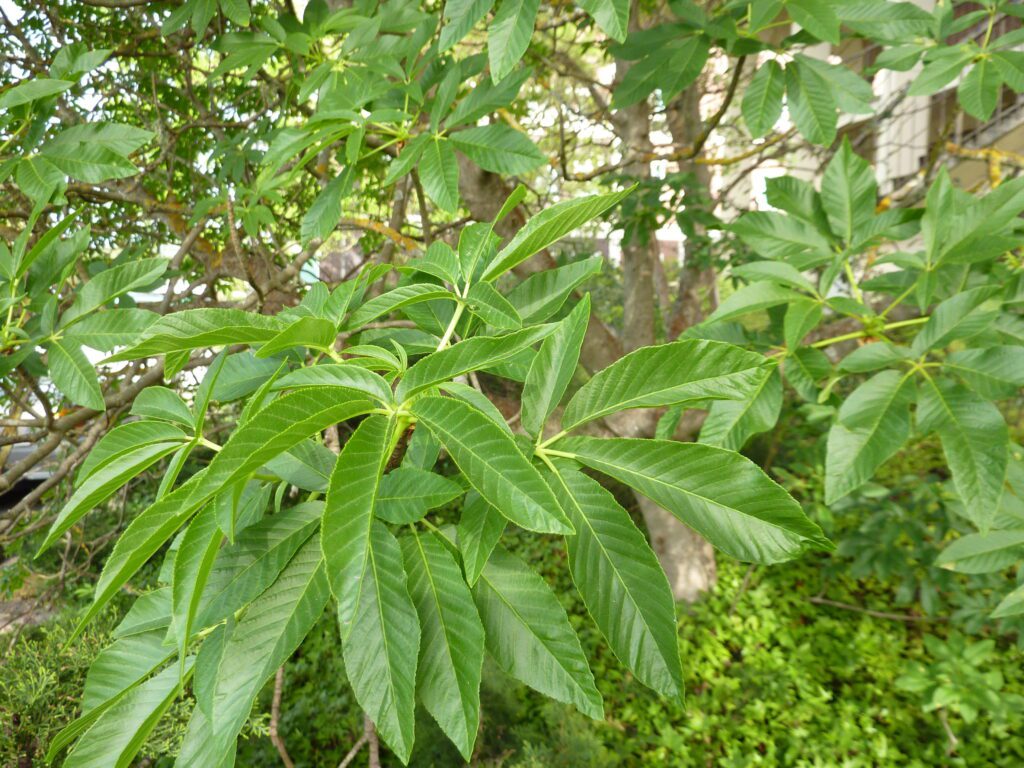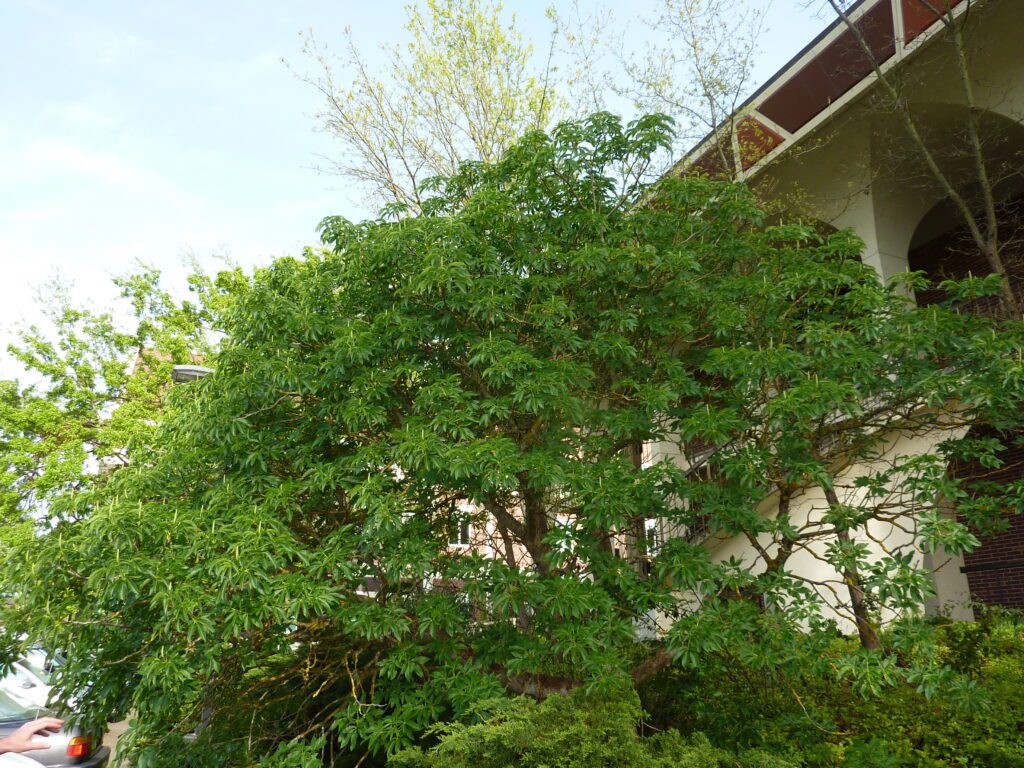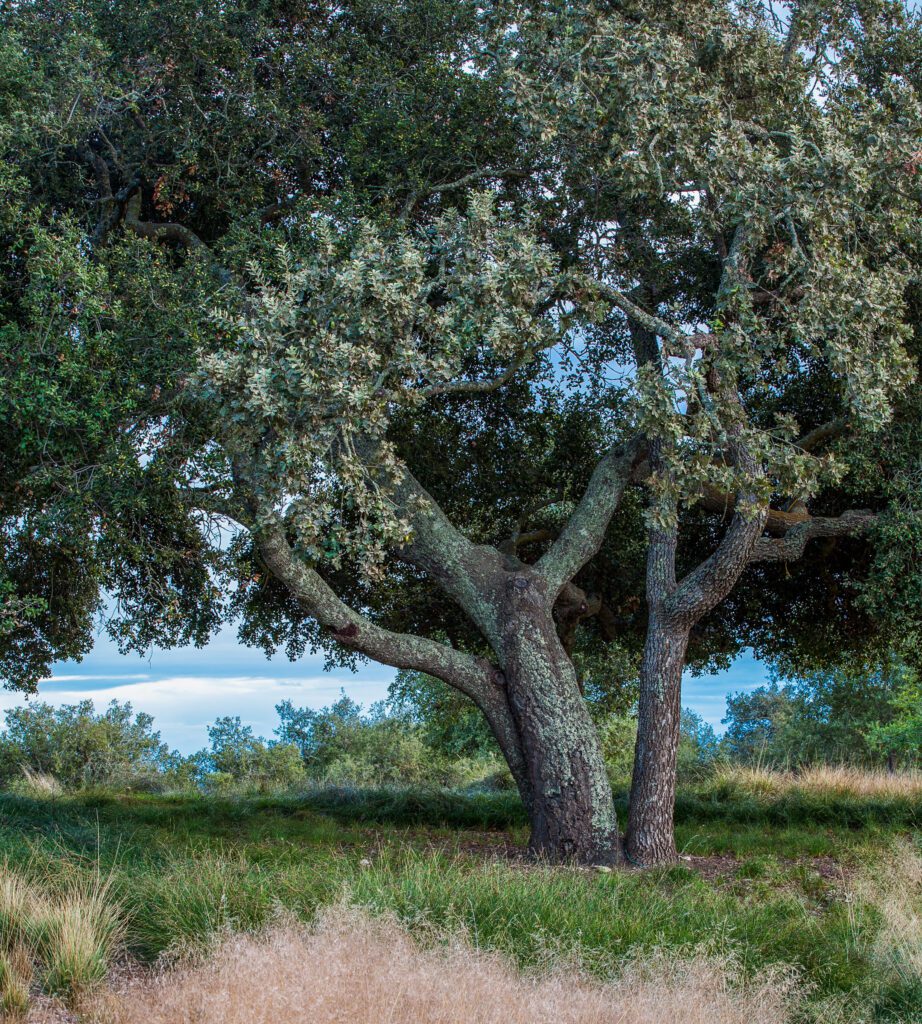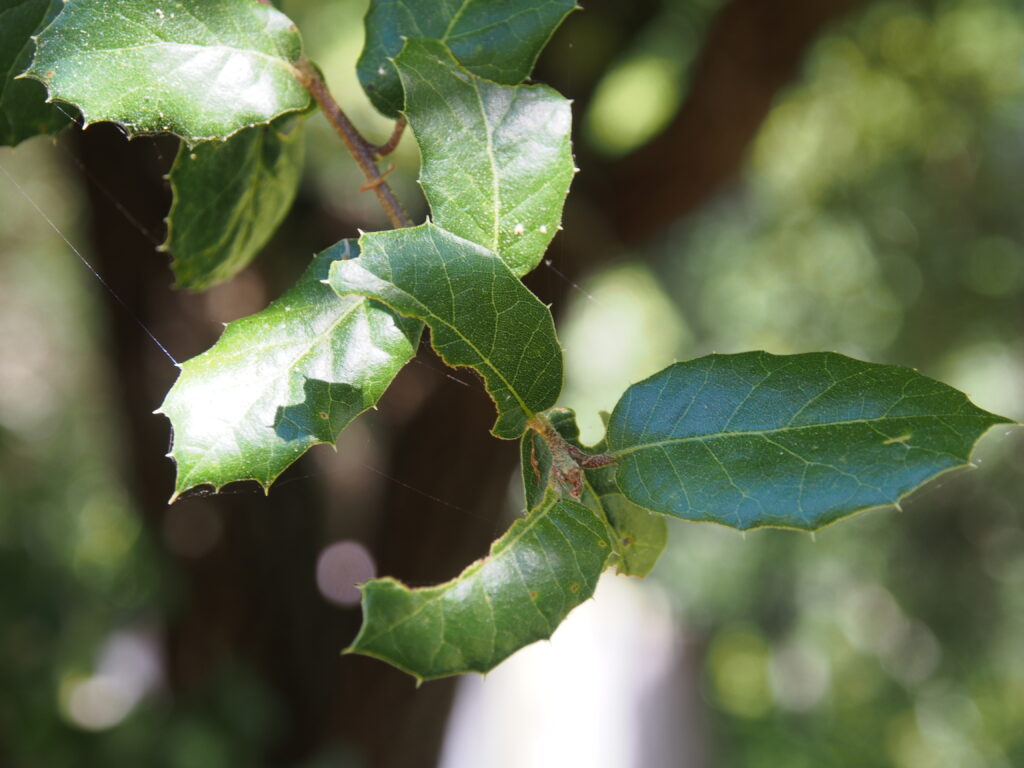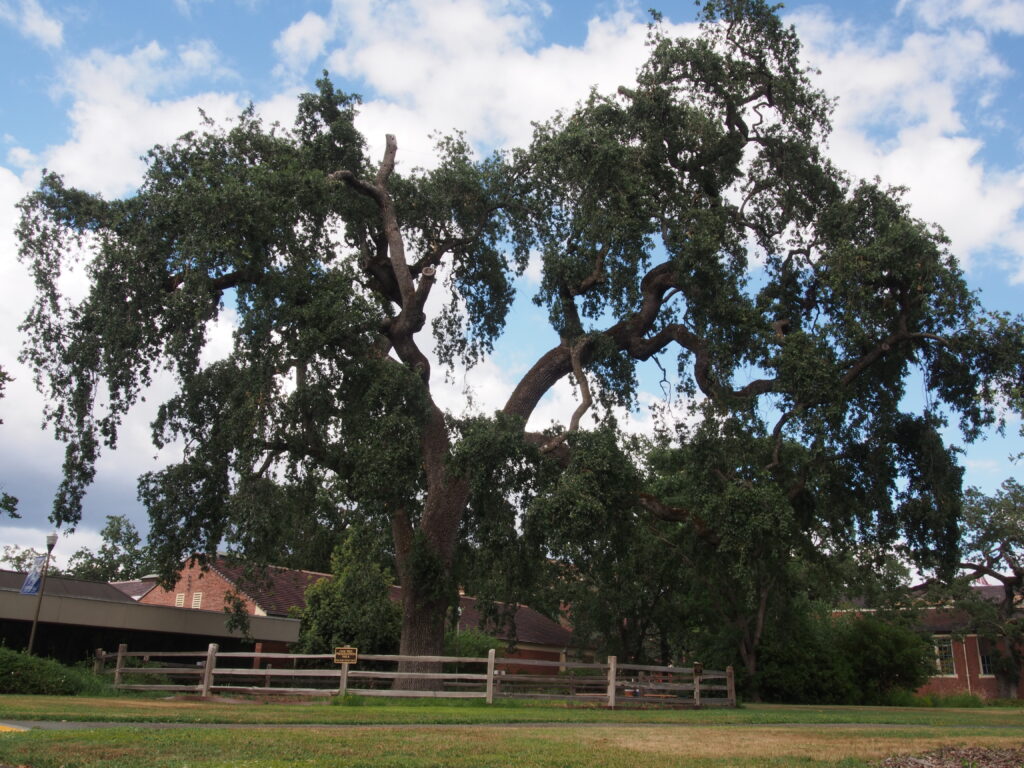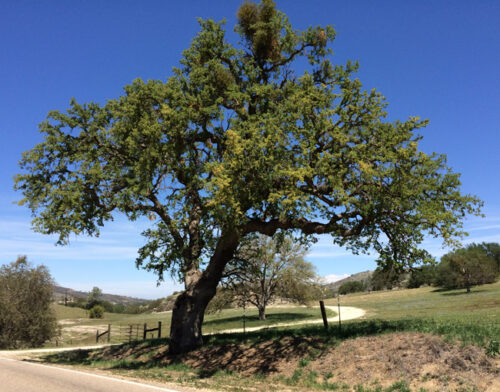New Oak Woodland
BACK TO FULL TOUR
Garden Features
Drought Tolerant
California Natives
Deer Resistant
Lawn-Free Landscaping
Wildlife Habitat
My wife and I built a house on a 2.2-acre grassy field in northwest Petaluma 23 years ago. I started planting trees, mainly native oaks, in the lower field, approximately 1.5 acres, away from the house. I now have about 14 20+-year old Quercus agrifolia and Quercus lobata. In addition, I planted 14 Sequoia sempervirons ( clearly a mistake), two Arbutus menziesii, and a number of non-natives, including some Plantanus acerfolia (Bloodgood London Plane), some Liquidambar styraciflua (Sweetgum), a Quercus coccinea, and some Acer rubrum ( scarlet maple), and others, in the same time frame. Over the years I’ve gradually added more trees, mostly native oaks. More recently I’ve been attempting to create a more diverse habitat in this “oak woodland” and have tried a variety of drought-tolerant native shrubs. Some have done well and others haven’t. I currently have a scattering of about 50 shrubs, most relatively young. I find this to be a hostile environment for new plantings, mainly because any attempt to water new plantings invites vicious attacks by gophers who prevent any roots from growing outside the gopher basket! Other stressors include hotter than usual summers, drier than usual ground, strong winds coming through the Petaluma gap, and nutrient-poor sandy loam soil. I find that the heartiest plants in these circumstances are a variety of manzanitas and ceanothuses.
I initially installed a drip irrigation system but found that it was impossible to continually trouble-shoot such a large system for damage caused by gophers. That system is now decommissioned. I currently hand-water new plantings every one to two weeks in the summer.
A variety of wildlife are utilizing this property, including a bare minimum of 33 species of birds, as well as deer, badgers, racoons, opossums, skunks, foxes, coyotes, gopher snakes, king snakes, one rubber boa, and a few amphibians. I’m constantly trying to attract more!
